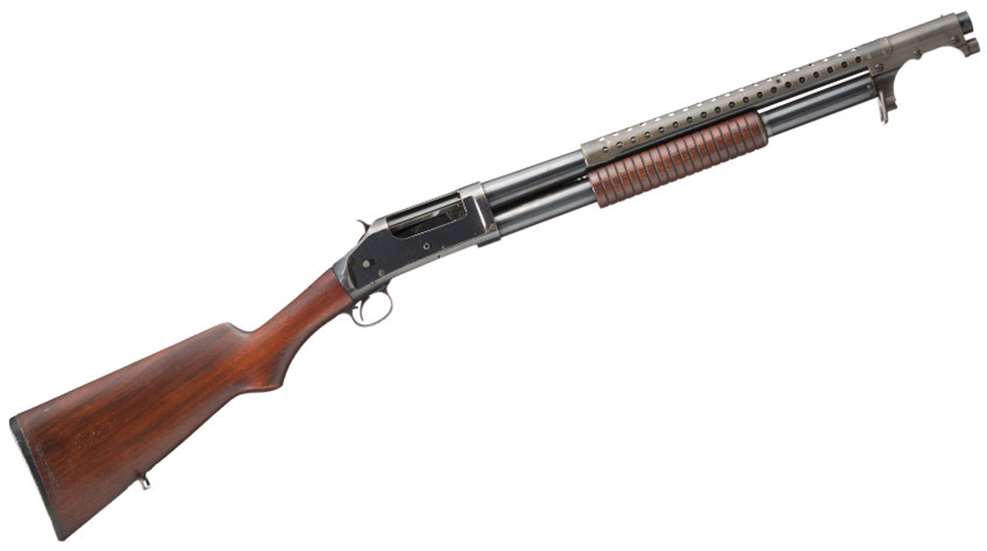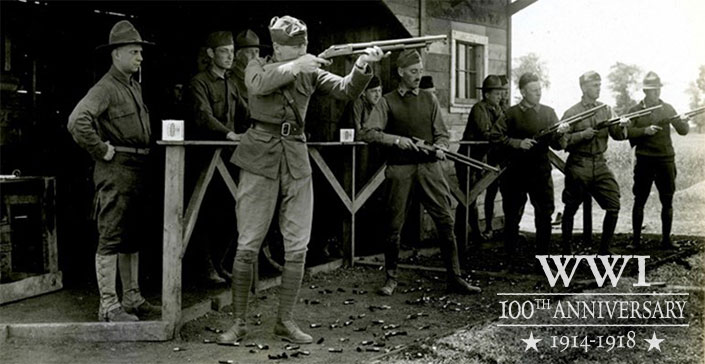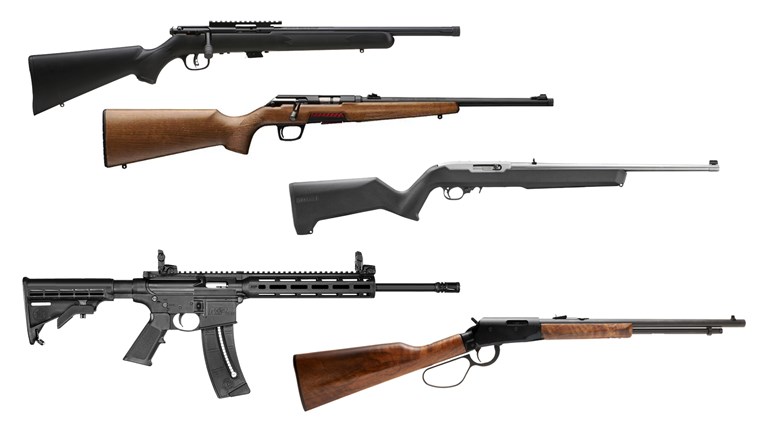
Though the Winchester Model 1897 shotgun is perhaps best-known for its use during World War I as the "Trench Gun," this reliable, pump-action shotgun saw use in military, law-enforcement and commercial applications throughout the 20th century.
On Thursday, Sept. 19, 1918, Swiss Chargé d’Affaires in Washington, DC, Frederick Oederlin, presented a cablegram to U.S. Secretary of State Robert Lansing on behalf of the government of Imperial Germany. The communiqué did two things: first of all, it lodged an official protest that accused the American Expeditionary Force (AEF) of violating the laws and customs of land warfare; secondly, it directed a menacing threat against U.S. troops fighting in France over their use of a specific category of modern firearm:
The German government protests against the use of shotguns by the American Army and calls attention to the fact that, according to the laws of war, every prisoner found to have in his possession such guns or ammunition belonging thereto forfeits his life.
To the German government, the presence of combat shotguns arming some Soldiers and Marines of the American Expeditionary Force ignored Article 23(e) of the Hague Convention of 1907, which prohibited the use of “arms, projections or materials calculated to cause unnecessary suffering.” In this oh-so-ironic way, the country responsible for inflicting all manner of “unnecessary suffering” by introducing poison gas to the battlefields of the First World War, came forward to complain about a simple firearm.

Although by then the United States had been officially at war with the German Empire for 532 days, ground forces of the AEF had only been directly engaged in combat operations for 16 and a half weeks. Since Cantigny back in May, the Americans had gone into battle with the Springfield 1903 rifle, the 1917 rifle, the 1911 pistol and several firearms of foreign origin. They had also carried the 8-pound Winchester Model 1897 shotgun. Designed by John Moses Browning, the Model ‘97 is a pump-action 12-gauge that was ultimately modified for military use by the addition of a heat shield, bayonet lug and sling swivels. So equipped, it was known as the “Trench Gun.”
In action, troops armed with it were issued nine-pellet 00-buck shotshells that were absolutely devastating at close range. In the trench environment that so closely characterized the fighting on the Western Front, the combination of Model ‘97 and 00 buckshot was ideal, and the tone of the German diplomatic protest of Sept. 19, 1918 provides powerful evidence to that point.

Just imagine it: every blast from a Winchester Model 1897 "Trench Gun" was comparable to a full magazine fired from a .32-caliber automatic pistol. To make it even more intimidating, the Trench Gun was equipped with an “auto-trigger”–meaning that there was no disconnector in the fire-control group. The Soldier or Marine wielding a Model ‘97 could hold down the trigger and fire all six shells in the gun’s tubular magazine by simply working the slide action. This kind of firepower gave U.S. infantry units a force multiplier that significantly enhanced their ability to destroy the enemy in close combat. In other words, the Americans entered the fight with an overwhelming weapon and the Germans did not like it.

Although the Kaiser’s government laid out its ultimatum in no uncertain terms, Secretary Lansing was quick to fire back. Nine days later, he fired back the following response:
…the Government of the United States has to say that the provision of the Hague convention, cited in the protest, does not in its opinion forbid the use of this kind of weapon. Moreover, in view of the history of the shotgun as a weapon of warfare, and in view of the well-known effects of its present use, and in the light of a comparison of it with other weapons approved in warfare, the shotgun now in use by the American Army cannot be the subject of legitimate or reasonable protest.
The Secretary then directly confronted the German government’s threat to the lives of American servicemen with a threat of his own:
…if the German government should carry out its threat in a single instance, it will be the right and duty of the Government of the United States to make such reprisals as will best protect American forces, and notice is hereby given of the intention of the Government of the United States to make such reprisals.
With that, the matter came to an end. The German government did not execute any members of the American Expeditionary Force armed with the Winchester Model 1897 shotgun and, just 44 days later, the war ended with the armistice of November 11th. Despite Germany’s protests, the Winchester Model 1897 “Trench Gun” had written itself into the history of U.S. martial arms, in the process earning an important place in the history of “The Great War.”




































